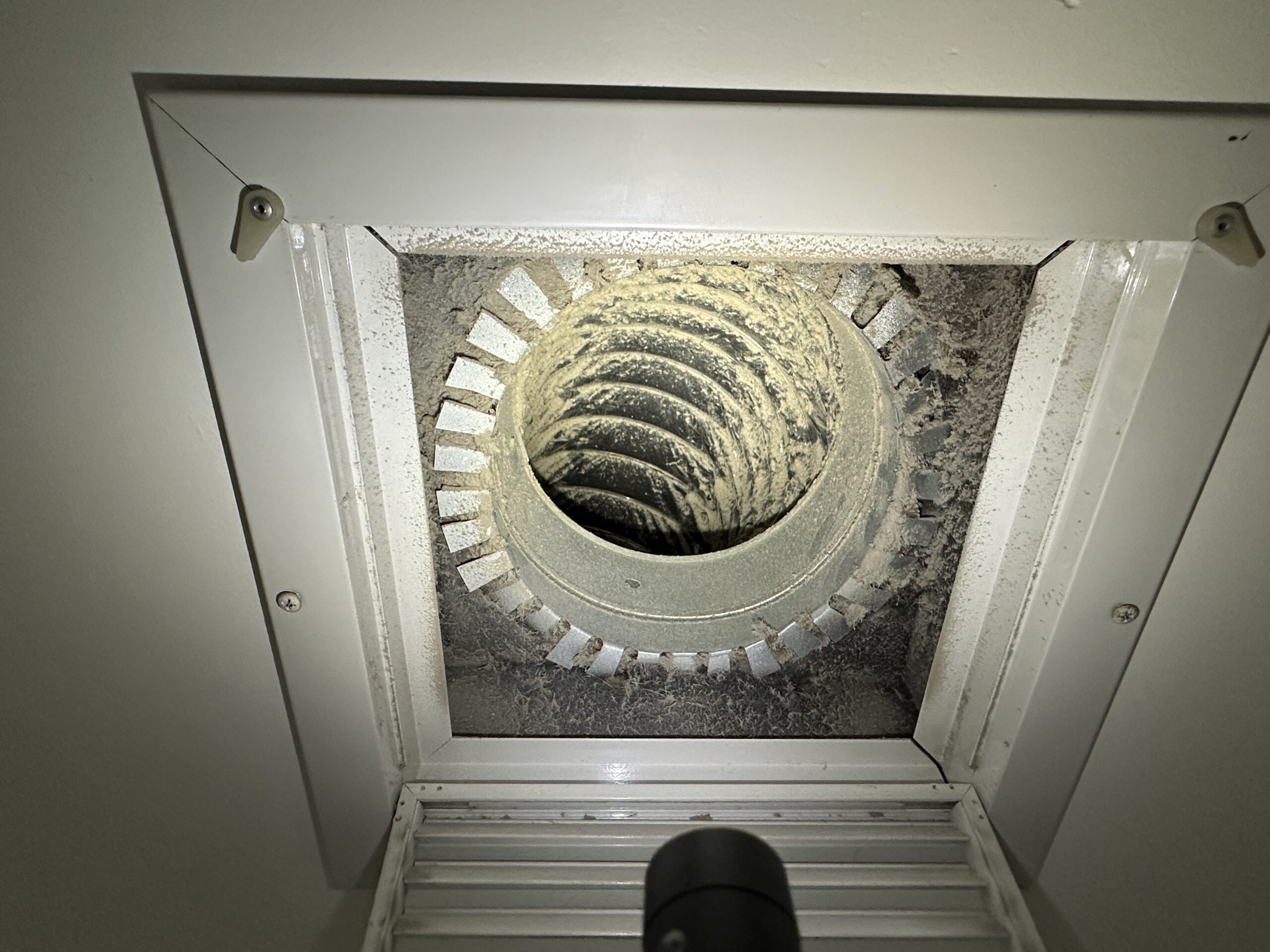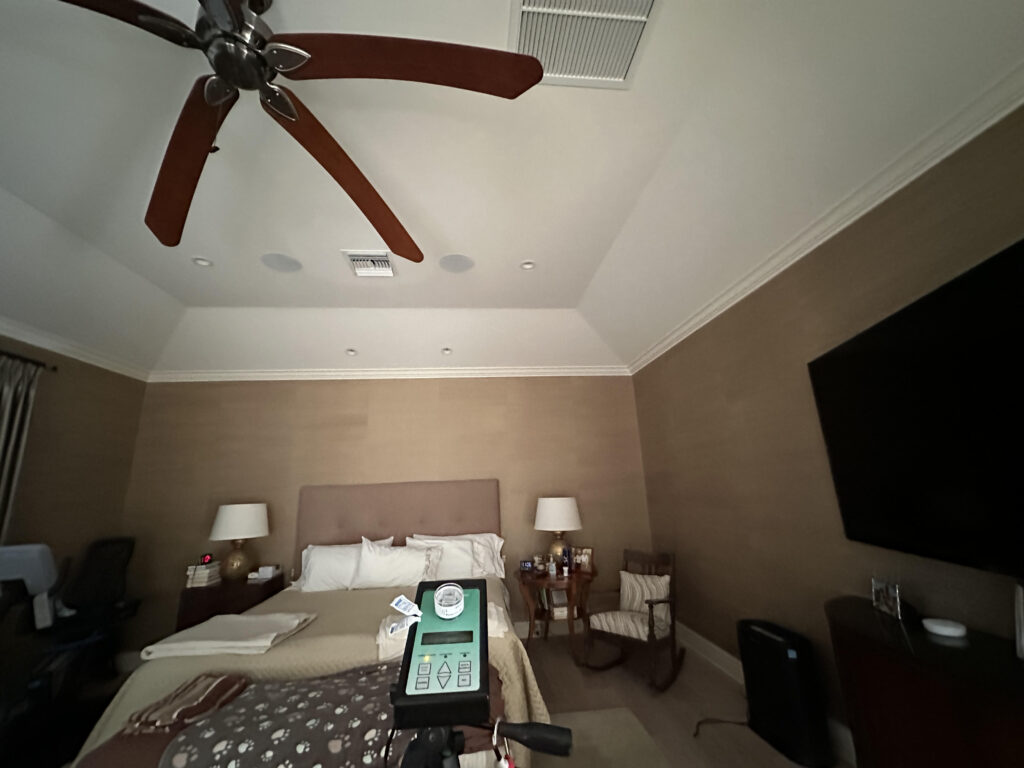Is your home’s air feeling stuffy or dusty? You might be surprised to learn that the culprit could be found within your walls – dirty air ducts. Clogged air ducts can build up dust, allergens, and even mold, negatively impacting your indoor air quality and potentially causing allergy and asthma symptoms. If you’re noticing a decline in your home’s air quality, considering professional air duct cleaning services can be a worthwhile investment in your health and comfort.
What Is the Air Duct Cleaning Process?
Air duct cleaning, also sometimes referred to as HVAC remediation, is a simple yet complex process of removing dust, dirt, debris, and allergens that accumulate inside your HVAC’s system’s ductwork. These professionals use specialized tools like high-powered HEPA vacuums, brushes, and air whips to displace and remove contaminants from the entire duct system, including supply and return vents, and even the interior of the air handling unit itself. By thoroughly cleaning your air ducts, you can potentially improve airflow throughout your home, increase the efficiency of your HVAC system, and most importantly, create a healthier living environment for you.
How Can I Tell if My Air Ducts Need Cleaning?
The reality is, routine cleaning may not be needed for everyone. If your home doesn’t have significant dust problems, unpleasant odors, or resident’s allergies or asthma that haven’t exacerbated, a duct cleaning might not be urgent. However, if you’ve recently undergone renovations, notice symptoms related to indoor air quality, or suspect mold growth within the ductwork, then scheduling an inspection by a reputable NADCA-certified company is recommended. They can assess your specific situation and determine if cleaning is truly necessary for optimal air quality and HVAC system performance.
How The Process Works
Let’s explore the inner workings of air duct cleaning! In the following section, we’ll break down the typical steps involved in professional air duct cleaning, the equipment used, and the benefits you can expect from a thorough cleaning service.
Necessitated before moving forward
1. Inspect the Ducts
- An inspection of your air ducts is a great first step. It allows you to:
- Professional Judgment: During inspection, professionals can identify issues that are not easily accessible as well as address leaks or damaged (flexible) ducts.
- Condition Assessment: Uncover the actual condition of your air duct system and see if there’s dust or debris before cleaning as well as mold in some instances. According to IICRC 520S, there are 3 conditions to consider:
- Condition 1: A normal fungal ecology for an indoor environment that may have settled spores, fungal fragments, or traces of actual growth. This condition grants a NADCA-certified service provider to immediately perform HVAC remediation
- Condition 2: (settled spores) is an environment that is primarily contaminated with settled spores that were dispersed directly or indirectly from a Condition 3 area and which may have traces of actual growth. This condition will necessitate a licensed mold assessor before moving forward to determine the extent of the situation.
- Condition 3: (actual growth) is an indoor environment that is contaminated with the presence of actual mold growth and associated spores. Actual growth includes growth that is active or dormant, visible or hidden. This condition will necessitate a licensed mold assessor before moving forward to determine the extent of the situation.
2. Create Negative Pressure
Air duct cleaning utilizes negative pressure, essentially a very powerful HEPA vacuum, to safely remove dust, allergens, and mold spores out of the duct system. This prevents the contaminants from re-entering your home’s air. It’s especially important for mold removal, because it minimizes the risk of spreading spores during the cleaning process.
3. Agitate the Dust
While negative pressure is established, vents are uncovered and ducts are cleaned one after the other. A key difference between NADCA-certified technicians and less reputable services depends on the time spent per vent.
Untrained technicians sometimes use a quick air compressor blast and disinfectant spray that is ineffective and often creates more of a mess in your home.
A high quality and reputable NADCA technician utilizes rotating brushes, compressed air tools, and HEPA vacuums to agitate and remove dust efficiently, ensuring a thorough cleaning and healthier indoor air.

4. Clean the System
NADCA suggests bringing attention to other components of the HVAC system as well, including the air handler’s blower motor, coils, and drain pan. Cleaning these components, along with preventative actions like replacing filters and the addition of UV lights, will improve the air quality in your home, extend the life, and increase the efficiency of your HVAC system.
How Messy is Duct Cleaning
While the thought of cleaning air ducts might bring images of a dusty mess, the reality is different with professional help. If not done properly, air duct cleaning can be very messy, as well as make the situation worse and spread to other parts of your home. It is important to seek professional help if the situation lies beyond a simple house-keeping job. A true quality service will follow all the right protocols and professional judgment to ensure a thorough clean-up to improve your home’s air quality, free from dust and allergens, without the mess!
Is Duct Cleaning Worth It?
The decision ultimately comes down to your specific situation. If you’re experiencing allergy or asthma flare-ups indoors, or noticing visible dust or mold in vents, then air duct cleaning can be a worthwhile investment in your health and comfort. However, if you suspect your home to have clean air vents, allergy and asthma symptoms are under control, and your HVAC system functions flawlessly, then routine duct cleaning might not be necessary.
The key takeaway? Listen to your home and prioritize your indoor air quality. If concerns arise, consult a qualified NADCA-certified professional for an assessment. They can provide expert advice and recommend the most suitable course of action to keep your home’s air clean and your family breathing easy.


